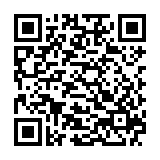Interpreting industry tech is advancing at a rapid pace, and we wouldn’t have been close to where we are today without technology. It’s a fact: technology plays an essential role in our modern lives. However, in the translation and interpreting sector, each new tech advancement poses a risk to linguists. A risk of one day being replaced by computers.
Today, we’ve got apps that connect people to real-time interpreters where and when they need it most. It’s easier than ever to bridge the language and cultural barriers that become more avoidable with globalization.
While there is a fear that technological advancements might replace some traditional workers in the near future, linguists can rest assured that they will always have jobs, albeit working alongside machines.
What Interpreting Industry Tech is Currently in Use?
Interpreters and translations use a variety of tech tools to assist them with their professional tasks these days. These tools include:
MT (Machine Translation)
MT is great to use if you want to translate chunks of text without the assistance of a human translator. But there is a downfall to machine translation and computer-generated translations. And that downfall is that these tools don’t translate according to cultural nuances. It is this pitfall that disqualifies tools like MT for standalone use, as the output must be overseen by human translators.
TM (Translation Memory)
Translation Memory systems save words that have already been translated into a target language by a human translation. These saved words and phrases can then easily be used for future translation projects. Tools like this help improve accuracy when it comes to professional translation projects.
Audio and Video Content Tools
Interpreters these days have many more opportunities to work with international clients thanks to smartphones and web-conferencing systems. Thanks to remote interpreting solutions, there’s no longer a geographical location issue involved in breaking through the language barrier. Tools like the Day Interpreting App, for example, helps qualified and experienced interpreters connect with their clients in real-time. Since it includes visual aid, there’s also nothing that gets lost in translation as body language can also be interpreted remotely.
How Tech Continues to Drive Change in Interpreting Services
Modern interpreters are armed with the tech required to facilitate video remote interpretation (VRI) services. And based on that principle alone, the industry as a whole is excited to see what the future will hold for the linguistic field.
Language specialists now have access to tools that are worlds away from the days of booths and headsets. But more than just the interpreting tools, the way in which interpreters work has also evolved drastically over the last few years.
There are more and more interpreters that offer their services through remote interpreting services than ever before, and a mere decade ago, the idea seemed very far-fetched. Today, professional interpreters can work from the safety and comfort of their own homes to offer remote language services when in-person interpreting is impossible. And the clients of these interpreters also benefit as there are no travel costs included in these types of language services.
In the Future, We’ll Overcome Language Barriers with a Hybrid Solution to the Interpreting Process
There are many tools out there that can help bridge language barriers, but these translation technology tools cannot be used as standalone solutions in the translation process. Since tools like Google Translate and machine learning cannot understand cultural nuances, they cannot accurately and consistently translate human communication.
Neural machine translation technology also does not understand the emotional factor that plays a very important role in communication. These tools might be good for short paragraphs and phrases, but they cannot translate the underlying theme of a message.
So, while tech advancements might help drive change in the interpreting industry, there is empirical evidence that it is highly unlikely that they will replace professional interpreting services in the near future.
Technological advancements have brought interpreters and their clients closer together than they could have ever been in the past, and it is with the help of these tools that we’re breaking down language obstacles more efficiently than ever before.
Today, interpreting services are much more accessible and personalized, and as the tools we use keep evolving, so will our processes. Looking forward, the future of translation and interpretation is a human-and-machine-powered force, both working together to provide the best possible translations.





0 Comments